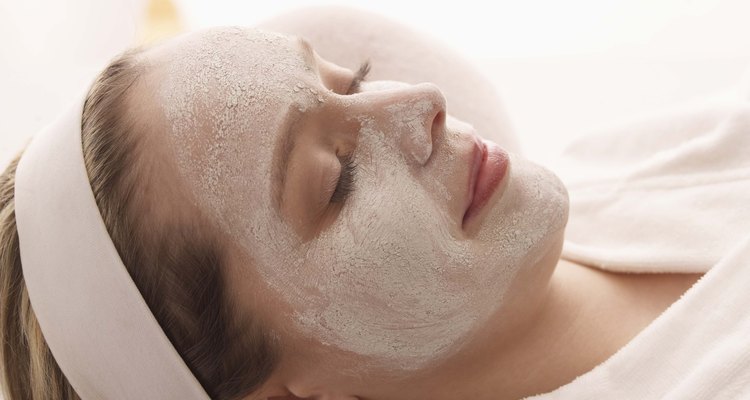
Jupiterimages/Comstock/Getty Images
You might love wine, spicy foods, the outdoors and a nice hot shower, but you probably don't want your face to turn red as a result. However, the American Osteopathic College of Dermatology identifies each of these indulgences as triggers for rosacea. Other causes of redness might include eczema, acne, psoriasis or sensitivity to wind, sun and outdoor allergens. A calming mask may relieve the redness, regardless of the origin.
Get Out of the Red
A small change in skin care routine can calm redness, says Dr. Diane Berson of the American Academy of Dermatology. Consistent hydration with moisturizing elements will prevent breakdown of the lipids in skin’s natural moisture barrier. This breakdown can result from acne medication, harsh cleansers or alcohol-based products. Besides regular use of a moisturizer that contains a humectant like urea or glycerin, you can apply a face mask that soothes redness and leaves your skin fresh and calm. Two good ingredients for a redness-reducing and moisturizing mask are oats and honey.
Why It Works
Ground oats, known as colloidal oatmeal, are proven to be anti-inflammatory and are used in many over-the-counter redness reducers. They also operate as a cleanser, moisturizer and buffer. According to a 2007 article by E.S. Kurtz and W. Wallo, published in the "Journal of Drugs in Dermatology," the lipids in oatmeal keep your own lipids from oxidizing.
Honey gives a mask a pleasant texture and smell. It has therapeutic benefits, too: According to the National Honey Board, honey is a natural humectant that pulls moisture from the air and onto skin. It also has cleansing antimicrobial properties.
Making the Mask
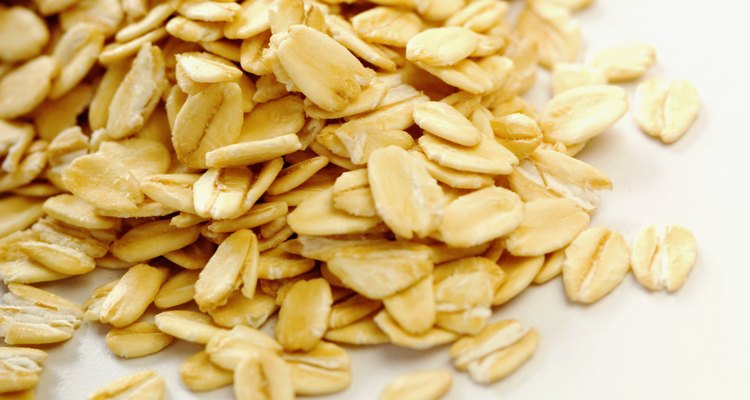
Medioimages/Photodisc/Photodisc/Getty Images
When making a mask, you can use any kind of honey as long as it's 100 percent pure honey and not a mixture of honey and a byproduct. However, be careful about the kind of oats you use -- use only long-cooking oats, whole oats or oat groats.
Make the mask by grinding the oats into a very fine powder with a clean coffee or spice grinder. Make about 1/2 cup of the oat mixture and add a few teaspoons of honey. Stir until you have formed a paste. Use a little warm water or warm milk to adjust the consistency to one that suits you.
Wash your face with warm water and pat it dry before applying the mask mixture with your fingers. Cover all areas of your face that are prone to redness, but keep your eyelids dry. For additional effectiveness, cover the mask with a cheesecloth that has holes for eyes, nose and mouth.
Rest and Rinse
Relax for at least 15 minutes, then saturate a clean cloth with warm water and wash the mask from your skin. If you have any mask mixture left, store it in a clean plastic or glass container and put it in the refrigerator for up to one week. Warm it to room temperature before application. Use weekly along with a daily moisturizer to minimize redness.
Related Articles
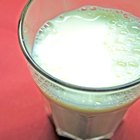
How to Make a Cinnamon Milk Face Mask

Honey Mask for Wrinkles

Homemade Facials to Clear Blemishes
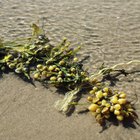
How to Use Kelp on Your Face to Tighten ...

How to Use Honey to Remove Milia

Can You Use Oatmeal to Remove ...
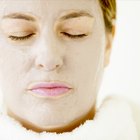
How to Make a Thermoherb Mask at Home

Can Any Home Remedies Get Rid of Acne ...

How to Make a Lip Mask for Extremely ...

How to Reduce Redness

How to Make Your Own Oxygenating ...

Homemade Remedies With Turmeric

How to Get Lighter Skin Without ...

How to Wash Your Face With Chamomile
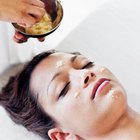
How to Make Body Scrub With Olive Oil & ...
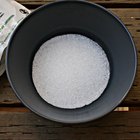
How to Make Xylitol Toothpaste

How to Make Sweet Brown Rice

How to Make Organic Shampoo at Home
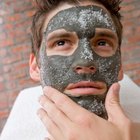
How to Make a Sugar Mask for Your Face
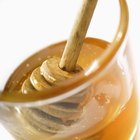
How to Exfoliate the Face With Honey
References
- American Academy of Dermatology: Small Changes in Skin Care Routine Can Significantly Improve Skin Affected by Acne and Rosacea
- Journal of Drugs in Dermatology: Colloidal Oatmeal: History, Chemistry and Clinical Properties.
- American Academy of Dermatology: Sensitive Skin
- FDA: CFR - Code of Federal Regulations Title 21
- National Honey Board: Nature's Skin Care
Writer Bio
Amy Stanbrough is a writer of fiction and nonfiction. Her work has appeared in "Bust," "Woman's World," "Southern Exposure" and many other publications. Stanbrough holds an M.F.A. in creative writing from George Mason University.
Photo Credits
Jupiterimages/Comstock/Getty Images